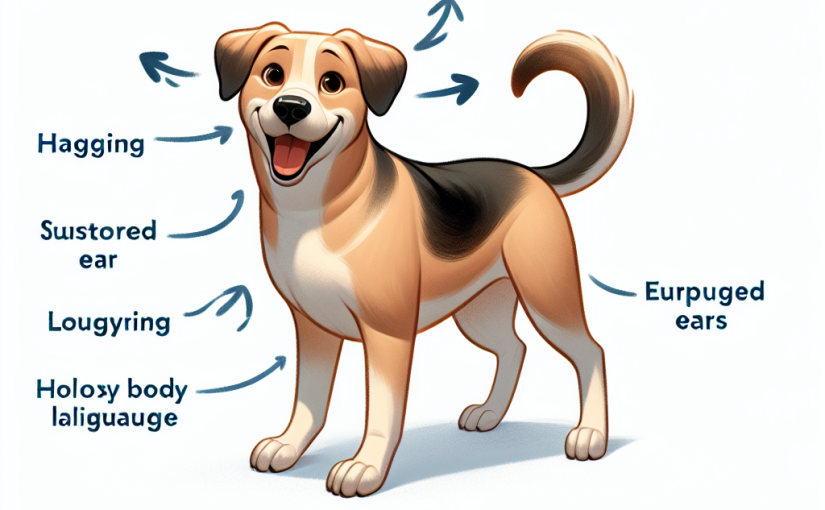Understanding Fleas and Their Impact on Dogs

So, you’re pulling your hair out because you can’t get rid of fleas on your dog. You’re not alone. Many dog owners face this pesky problem. Let’s dive into the nitty-gritty of understanding fleas on dogs. Fleas are tiny, but they’re a big deal. They’re not just annoying; they can wreak havoc on your pet’s health. These little jumpers feed on your dog’s blood, causing itching and discomfort. And it’s not just your furry friend who suffers. Fleas can make life miserable for you too. Think of them as tiny vampires, and your dog is their buffet. They can cause allergic reactions, transmit diseases, and if left unchecked, lead to anemia in severe cases. Not to mention, they can hop onto you, leaving itchy welts in their wake. Understanding the flea impact on pet health is the first step to tackling this issue.
Starting the Battle: First Steps to Combat Fleas
When it comes to fleas, the clock is ticking. The importance of acting fast can’t be overstated. Fleas reproduce at an alarming rate. One flea can quickly turn into hundreds. So, what’s your battle plan? First things first, grab your dog and head to the tub. Bathing and combing are your new best friends. Use a gentle dog shampoo to give your pup a good scrub. The water and soap will kill a bunch of those pesky critters. Follow up with a flea comb. It’s a simple tool, but it works wonders. Comb through your dog’s fur, and you’ll see the evidence—those tiny black specks are flea dirt, and you might even catch some fleas in action. It’s a bit like a treasure hunt, only not as fun. But hey, every flea you catch is one less to worry about.
Exploring Flea Treatment Options
Once you’ve tackled the initial onslaught, it’s time to explore flea treatment options. There are plenty of over-the-counter solutions out there. From topical treatments to oral medications, you’ve got choices. Many folks swear by these. They’re accessible and usually do the trick for mild infestations. But sometimes, things are more serious. If your flea problem feels like you’re fighting a losing battle, it might be time to consult a vet. Prescription flea medications can be more potent. Your vet can offer guidance and prescribe something stronger if needed. Don’t feel bad if you have to go this route. Sometimes, a little extra firepower is necessary to win the war.
Home Remedies and Natural Alternatives
Now, let’s talk about some home remedies and natural alternatives. Because sometimes, you just want to keep things simple and chemical-free. Dawn dish soap is a surprising ally in this fight. A little squirt in warm water can help remove fleas during bath time. It breaks down the flea’s outer shell, making them easier to wash away. Follow up with a flea comb, and you’re golden. And speaking of warm water, ever thought about using hot water? Washing your dog’s bedding and your linens in hot water can kill flea eggs and larvae. It’s an easy step that makes a world of difference. Remember, though, natural flea removal methods might take a bit longer to show results. Patience is key here.
Preparing Your Home: Creating a Flea-Free Environment
Finally, let’s get your home flea-free. Because, let’s face it, if your home is a flea haven, your dog’s never going to get a break. Home cleaning for flea prevention is crucial. Vacuuming is your new daily ritual. Floors, carpets, furniture—hit them all. Fleas love to hide in fibers. Empty the vacuum outside to ensure they don’t crawl back in. And if you want to go nuclear, consider flea bombs. But remember, these are serious business. Follow the instructions to a tee, and maybe head out for a bit while they do their thing. Creating a flea-free environment takes effort, but it’s worth it.
You’ve got this! Fleas may be resilient, but with a little grit and determination, you can win this battle. Thanks for sticking with me through this journey. Wishing you and your dog many itch-free days ahead.
Understanding Flea Life Cycle: Why They Keep Coming Back
Oh, fleas, those tiny menaces that seem to have a PhD in survival. If you’re struggling with “I can’t get rid of fleas on my dog,” you’re definitely not alone. Let’s unravel their secret playbook. Fleas are like ninjas of the pet world, with a flea life cycle in dogs that seems never-ending. First, there’s the egg, then the larva, the pupa, and finally, the adult. This cycle can last anywhere from a couple of weeks to a few months. Just when you think you’ve won the battle, a new batch hatches, and you’re back to square one.
So why do they keep coming back? Well, it’s like they have a master plan. Those eggs can fall off your dog and hide in carpets or bedding, waiting for the perfect moment to hatch. And when they do, they’re hungry, and your dog is an easy target. It’s a vicious cycle, really. You might treat your dog, but without addressing the environment, you’re just playing whack-a-mole. Trust me, I’ve been there, and I know it’s frustrating. But understanding their life cycle is the first step in outsmarting them.
Natural Remedies for Flea Infestations: Do They Work?
Now, some folks swear by natural flea remedies for dogs. You might be wondering if they really work or if they’re just old wives’ tales. Let me tell you, I’ve tried a fair share in my day. There’s apple cider vinegar, lemon sprays, and essential oils. They sound wonderful, right? But do they actually give fleas the boot?
Well, here’s the thing. Some of these remedies can help, but they’re not a magic bullet. Apple cider vinegar, for example, might make your dog’s skin less appealing to fleas, but it won’t kill them. And essential oils can be tricky; some are toxic to dogs if used improperly. So, tread carefully.
I remember one rainy weekend when I tried a concoction of lemon and rosemary water. My kitchen smelled like a spa, which was nice, but the fleas? They were still hanging around. These natural solutions can be part of your arsenal, but don’t pin all your hopes on them. They’re more like a gentle nudge than a knockout punch.
Over-the-Counter Solutions: Pros, Cons, and Costs
Then there’s the world of over-the-counter flea treatments. The shelves are packed, and prices can vary like the weather. So how do you know what’s worth your hard-earned cash? Let’s break it down.
Pros first. Over-the-counter options like topical treatments, shampoos, and collars can be effective. They’re easy to find at your local pet store or online, and they usually work fast. If you’re in a pinch and need a quick fix, they can save the day.
But, there are cons. Some products can irritate your dog’s skin, or they might not be strong enough for a bad infestation. Plus, the cost of flea treatments can add up. You might spend anywhere from $20 to $50 for a month’s supply, depending on your dog’s size and the product’s brand. I’ve learned the hard way that sometimes you get what you pay for. A cheaper option might save you a buck, but if it doesn’t work, you’re back to square one.
When to Call the Vet: Signs You Need Professional Help
Sometimes, the fleas win the battle. When that happens, knowing when to call in the pros is key. You might wonder, “When is it time to call the vet for fleas?” If your dog is scratching non-stop, losing fur, or has red, irritated skin, it’s time to get professional flea removal services. Vets have access to stronger treatments and can provide advice tailored to your dog’s needs.
I remember a summer when my dog just couldn’t get rid of fleas. I’d tried everything, and still, she was miserable. A trip to the vet was the best decision I made. They prescribed a treatment that worked like a charm. It wasn’t cheap, but seeing my pup comfortable again was worth every penny.
Flea Prevention: How to Keep Them Gone for Good
Finally, prevention is the real game-changer. I’ll share some flea prevention tips for dogs that have saved me countless headaches. First, keep up with regular flea treatments. Even if you think the fleas are gone, it’s better to be safe than sorry. Use a monthly preventative treatment and keep your home clean. Vacuum regularly, wash your dog’s bedding, and treat your yard if needed.
I learned the hard way that a little prevention goes a long way. I used to skip treatments in the winter, thinking the cold would take care of the fleas. Big mistake. Those critters are resilient, and they’ll find a way. Now, I stick to a routine, and my dog’s tail hasn’t stopped wagging since.
Thanks for sticking with me through this flea saga. Remember, you’re not alone in this fight. We’ll tackle those fleas and get your pup back to tail-wagging and flea-free days. Cheers to you and your furry friend!
Natural Remedies You Can Try at Home
Hey there, my fellow dog lover! If you’re like me, you know how frustrating it is when you can’t get rid of fleas on your dog. We’ve all been in that boat, trying every trick in the book to help our furry pals. Let’s dive into some natural flea remedies for dogs that you can whip up right at home without spending a fortune.
Picture this: it’s a sunny afternoon, and you’re just back from a walk with your dog. You notice them scratching more than usual. You panic, but wait, there’s hope! Have you heard of apple cider vinegar? Just a splash in your dog’s water bowl can make a difference. It’s no magic bullet, but it’s a start. And if you’re into DIY, you might want to try making a herbal flea spray. A simple mix of water, lemon slices, and a sprig of rosemary can create a gentle spritz to help deter those fleas.
But remember, these home remedies for dog fleas are just part of the solution. Think of them as one piece of the puzzle. You might not see instant results, but small steps can lead to big wins. It’s all about finding what works best for your dog and sticking with it.
The Role of Your Vet in Flea Control
Now, let’s talk about the unsung heroes in the battle against fleas—your vet. You might think they’re just there for annual shots and check-ups, but believe me, they’re a treasure trove of knowledge when it comes to how vets treat fleas on dogs.
Imagine this: after trying every natural remedy, you’re still seeing fleas. It’s frustrating, I know. This is where your vet steps in. They’re the experts who can prescribe those heavy-duty treatments that you can’t find over the counter. They’ve got solutions that work fast, especially when your pup’s comfort is at stake.
So, don’t shy away from a vet visit. They can tailor a flea control plan that’s just right for your dog. Plus, they can offer advice on avoiding flea infestations in the future. It’s like having a flea-fighting coach on your team. And trust me, that’s a game-changer.
Preventing Fleas from Coming Back
Alright, let’s talk about prevention. It’s like they say, an ounce of prevention is worth a pound of cure. Once you’ve tackled those fleas, the next step is to prevent fleas in the house and on your pooch from coming back.
Start by keeping your home clean. Regular vacuuming can do wonders. Fleas love to hide in carpets and upholstery, so make sure you hit those spots. And don’t forget your dog’s bedding—wash it often to keep it flea-free.
Thinking outside the box? Try planting some flea-repelling plants like lavender and mint around your yard. They can act as a natural barrier. It’s a bit of extra work, but it pays off when you see your dog lounging flea-free in the garden.
Remember, prevention is all about staying one step ahead. It’s not just about today’s battle; it’s about winning the war. And with a bit of effort, you can keep those pesky fleas at bay.
Common Mistakes and How to Avoid Them
We all make mistakes, right? Especially when we’re trying to help our dogs. But let’s chat about some common flea control mistakes and how to steer clear of them.
One biggie is relying on just one solution. It’s tempting to stick with a single product, but fleas can be stubborn. Mix it up a bit. Use a combination of treatments to keep them guessing. It’s like having multiple defenses in your arsenal.
Another slip-up? Missing those favorite haunts of your dog. You know, that cozy spot by the window or the shady corner of the yard. Fleas love these places too. Make sure you’re treating all those areas to keep them flea-free.
And here’s a tip: don’t forget to treat the outside of your home. Fleas can hitch a ride inside, so keeping your outdoor spaces treated is key. It’s a bit like painting a fence—cover all the areas, and you’ll have a solid defense.
When to Call in a Professional Exterminator
Sometimes, despite our best efforts, those fleas just won’t budge. It happens. And when it does, it’s time to call in the pros—professional flea extermination services can be a lifesaver.
Picture this: you’ve tried everything, but those fleas keep coming back. It’s frustrating and exhausting. This is where a professional exterminator can step in. They’ve got the tools and know-how to tackle even the most stubborn infestations.
Hiring a pro might seem like a big step, but sometimes it’s the best way to protect your home and your dog. They can assess the situation and create a tailored plan to eliminate fleas for good. It’s like having a flea-fighting army on your side.
So, don’t hesitate to reach out for help. It’s not a sign of defeat—it’s a smart move. And once those fleas are gone, you can breathe a sigh of relief and give your pup a well-deserved scratch behind the ears.
Thanks for sticking with me through this flea-fighting journey. You’ve got this! Remember, every step you take is a step towards a flea-free life for your dog. You’re doing great, and your pup is lucky to have you. Good luck, and here’s to less scratching and more tail wagging!
Quick Takeaways:
Hey there, dog lovers! So, you’re stuck in the “I can’t get rid of fleas on my dog” dilemma, huh? You’re not alone. Those tiny critters are a real headache, but don’t worry, you’ve got this. Understanding fleas on dogs is the first step. They’ve got a sneaky life cycle that makes them hard to beat. But knowing their moves gives you the upper hand.
First things first, let’s talk health. Fleas aren’t just annoying; they can really mess with your pup’s well-being. They cause itching, allergies, and even tapeworms. So, tackling them is not just about comfort—it’s about your dog’s health.
Now, onto the remedies. Natural flea removal methods, like herbal sprays and apple cider vinegar, can be part of the solution. But sometimes, they need a little backup. Over-the-counter flea solutions can be handy, but they’re not all created equal. Always check the label and ensure it’s safe for your furry friend.
Home cleaning is crucial for flea prevention. Vacuum like you mean it, wash your dog’s bedding, and keep the yard tidy. These steps go a long way in breaking the flea life cycle. And when all else fails, prescription flea medications from the vet can be your ace in the hole.
So, remember, you’re not alone in this battle. With a mix of natural remedies, effective flea treatments, and some good old-fashioned elbow grease, you can get your pup back to a flea-free life. You’ve got this!
FAQs:
1.
Why can’t I get rid of fleas on my dog despite trying everything?
Well, fleas are stubborn little buggers! They have a life cycle that includes eggs, larvae, pupae, and adults, which makes them tough to eliminate completely. If you’re saying, “I can’t get rid of fleas on my dog,” you might be missing one stage. Consistent treatment and cleaning are key. Make sure you’re following the treatment instructions to the letter, and don’t forget to clean your home thoroughly. Sometimes, a professional flea removal service can be the game-changer you need.
2.
Are natural flea remedies for dogs effective?
You bet they can be! Natural flea remedies like apple cider vinegar, diatomaceous earth, and herbal sprays can help. But remember, they work best as part of a bigger plan. They might not wipe out an infestation alone, but they can help keep flea numbers down and make your dog less attractive to fleas.
3.
What over-the-counter flea treatments are recommended?
There are quite a few over-the-counter flea treatments that work well. Some popular ones include topical solutions, flea collars, and oral medications. Always check with your vet before starting a new treatment, especially if your dog has health issues. Costs can vary, but many are reasonably priced and available at pet stores.
4.
When should I call the vet for fleas?
If you’ve tried everything and still find yourself saying, “I can’t get rid of fleas on my dog,” it’s time to call the vet. They can prescribe stronger medications and offer advice tailored to your situation. If your dog is scratching excessively, losing fur, or seems generally unwell, don’t wait—get professional help.
5.
What are some effective flea prevention tips for dogs?
Prevention is where it’s at! Keep your home clean—vacuum regularly and wash your dog’s bedding. Yard maintenance is also crucial; keep the grass short and remove debris. Consider using a flea prevention product year-round, as fleas can be active even in cooler months. Some people also use flea-repelling plants like lavender and mint in their gardens.
Conclusion:
Ah, the “I can’t get rid of fleas on my dog” saga. It’s a tough battle, but not impossible. Remember, fleas are tricky but beatable. Understanding their life cycle is your secret weapon. Focus on a mix of natural flea remedies and over-the-counter flea treatments to tackle the issue from all sides. And don’t forget about home cleaning for flea prevention.
Sometimes, though, you need to call in the pros—whether that’s your vet or a professional flea removal service. They’ve got the tools and know-how to help you out when the going gets tough.
In the end, you’re doing this for your furry pal’s health and happiness, and that’s what counts. Keep at it, and soon enough, those fleas will be a thing of the past. Thanks for sticking with me through this journey. You’ve got this, and your pup will thank you with wagging tails and happy barks. Good luck, and give your dog a big hug from me!
References:
1. [WebMD – What Are Fleas?](https://www.webmd.com/pets/remove-fleas-from-pet)
This source provides a comprehensive overview of fleas and various methods to remove them from pets, making it a reliable resource for pet health information.
2. [PetMD – How to Handle Fleas on Dogs](https://www.petmd.com/dog/general-health/how-to-handle-fleas-on-dogs)
PetMD is a trusted source for veterinary advice and offers detailed steps for removing fleas from dogs.
3. [RSPCA – Flea Treatment Advice](https://www.rspca.org.uk/adviceandwelfare/pets/general/fleas)
The Royal Society for the Prevention of Cruelty to Animals (RSPCA) provides authoritative advice on flea treatments, ensuring the welfare of pets.
4. [NBC News – How to Get Rid of Fleas](https://www.nbcnews.com/select/shopping/how-get-rid-fleas-ncna1262654)
NBC News offers practical advice on dealing with fleas, backed by expert recommendations, making it a credible source for general public guidance.
5. [Itch Pet – Treatment Resistance in Fleas](https://www.itchpet.com/blog/post/what-to-do-if-you-cant-get-rid-of-fleas)
Itch Pet focuses on understanding treatment resistance, providing insights into persistent flea infestations.
Our solution eradicates fleas on contact without harmful chemicals, ensuring a safe environment for your pets and family. Easy to use and highly effective, SayByeBugs helps you maintain a flea-free home. Learn more and order today at SayByeBugs.com











